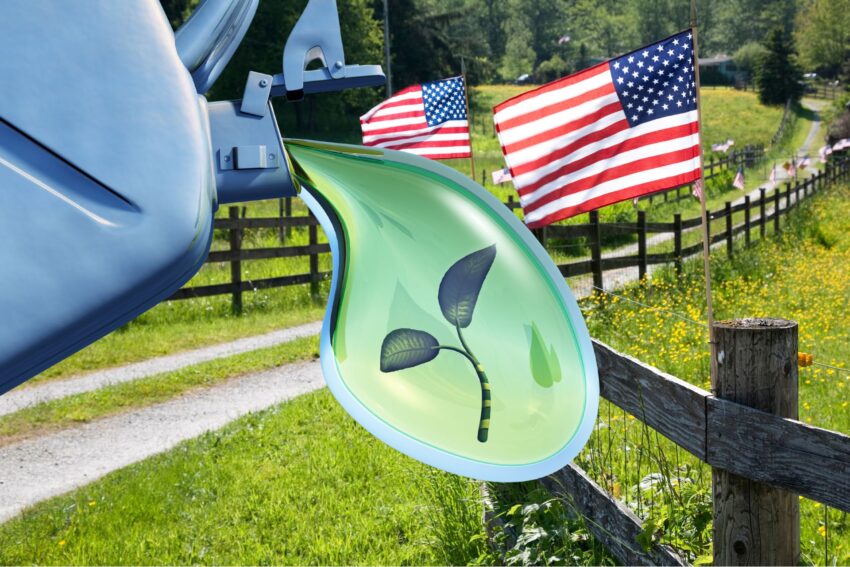For years, the U.S. government has poured significant financial resources into promoting electric vehicles (EVs), a technology that, despite the hype, remains impractical for many Americans and unpopular relative to its ambitious goals. Meanwhile, a quieter but far more promising opportunity lies in biofuels—an industry that could revitalize American agriculture, bolster farmers’ livelihoods, and strengthen the nation’s energy independence. Current legislative efforts to redirect funding away from EVs and toward biofuels signal a potential turning point, one that could yield tangible benefits for rural communities, consumers, and the broader economy.
The push to prioritize EVs has been marked by hefty incentives, including tax credits of up to $7,500 per vehicle and billions in grants for charging infrastructure. Yet, adoption remains sluggish—EVs accounted for less than 10% of new vehicle sales in 2024, hampered by high upfront costs, limited range, and a charging network that still leaves vast swaths of the country underserved. For rural Americans, particularly farmers who rely on heavy-duty machinery and long-distance travel, EVs are often a nonstarter. The technology simply doesn’t align with the realities of agricultural life, where reliability and fuel availability are non-negotiable.
In contrast, biofuels like ethanol and biodiesel, derived from crops such as corn and soybeans, offer a practical alternative that builds on America’s agricultural strengths. Recent legislative moves suggest a growing recognition of this potential. In January 2025, President Donald Trump signed an executive order titled “Unleashing American Energy,” which aims to roll back what he calls an “electric vehicle mandate” and eliminate subsidies that distort the market in favor of EVs. While not a formal mandate, the Biden-era policies this order targets—such as the Inflation Reduction Act’s EV tax credits and the Bipartisan Infrastructure Law’s $7.5 billion for charging stations—have long been criticized for favoring urban consumers over rural producers. Trump’s order calls for a review of these programs, with an eye toward redirecting resources to other energy options, including biofuels. Concurrently, lawmakers in agricultural states, such as Iowa and Nebraska, have introduced bills in Congress to expand funding for biofuel infrastructure, like the Higher Blends Infrastructure Incentive Program (HBIIP), which received nearly $60 million in January 2025 to upgrade fuel pumps and storage tanks nationwide.
For American farmers, this shift could be a game-changer. Biofuel production directly taps into existing crop markets, driving demand for corn, soybeans, and even emerging feedstocks like sorghum or switchgrass. The U.S. Department of Agriculture has already invested $238 million in programs like HBIIP and the Rural Energy for America Program since 2024, helping rural businesses and producers expand biofuel capacity. Increasing this investment would mean more acres planted, higher crop prices, and a steadier income stream for farmers facing volatile global markets. In 2021 alone, ethanol production supported over 300,000 jobs, many in rural areas, and contributed billions to the economy. Scaling up biofuel production could amplify these numbers, providing a lifeline to communities that have seen little benefit from the EV boom.
Consumers stand to gain as well. Biofuels are already blended into gasoline—think E15 or E85—and can be used in existing vehicles without costly upgrades or new infrastructure. This compatibility keeps fuel prices in check, especially as biofuel blends often cost less per gallon than pure gasoline. A 2025 USDA grant in Iowa, for instance, enabled a fueling station to install E15 dispensers, projecting an increase of over 116,000 gallons of biofuel sold annually. Nationwide, expanding access to higher blends could lower pump prices and give drivers more options, all while keeping money circulating in the American economy rather than flowing overseas for imported oil or foreign-made EV batteries.
Perhaps the most compelling case for biofuels lies in what it could mean for American energy independence. The U.S. still imports millions of barrels of oil each year, a dependency that leaves the nation vulnerable to global supply shocks and geopolitical tensions. Biofuels, produced from homegrown crops, cut that reliance. In 2024, ethanol alone displaced the need for over 600 million barrels of oil, according to industry estimates. Doubling down on this strategy could shrink the trade deficit, strengthen national security, and put the U.S. in the driver’s seat of its energy future. Unlike EVs, which depend on a supply chain for batteries dominated by foreign manufacturers, biofuels leverage America’s agricultural backbone—a resource that’s already here, ready to be tapped.
The legislative momentum to pivot from EVs to biofuels isn’t without challenges. Funding battles in Congress could stall progress, and entrenched interests in the EV sector will likely resist change. But the logic is hard to ignore: instead of chasing a technology that struggles to meet rural needs, why not invest in one that plays to America’s strengths? For farmers, it’s a chance to grow more than crops—it’s a chance to grow an industry. For consumers, it’s affordable fuel that works with the vehicles they already own. And for the nation, it’s a step toward energy self-reliance that doesn’t hinge on plugging in. As lawmakers and the administration wrestle with these choices, the fields of the heartland could hold the key to a more prosperous, independent America.


